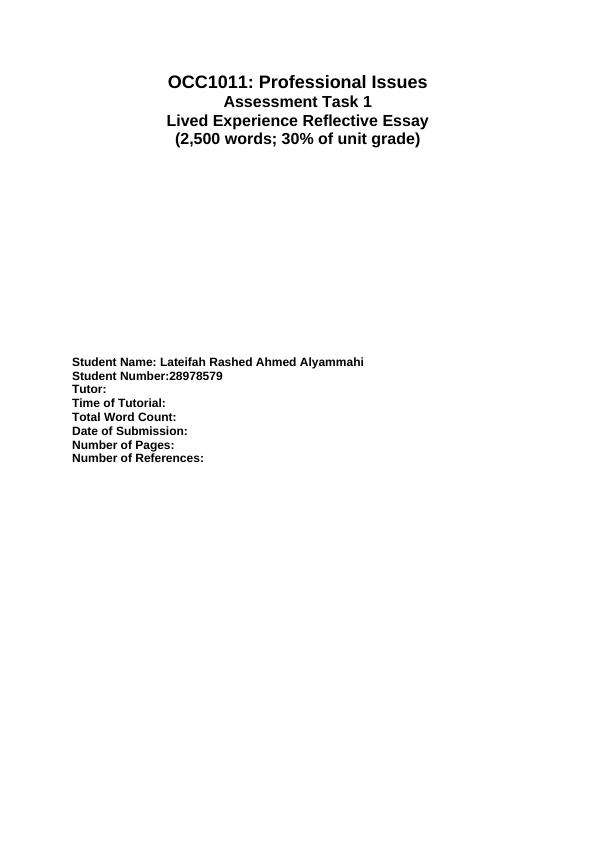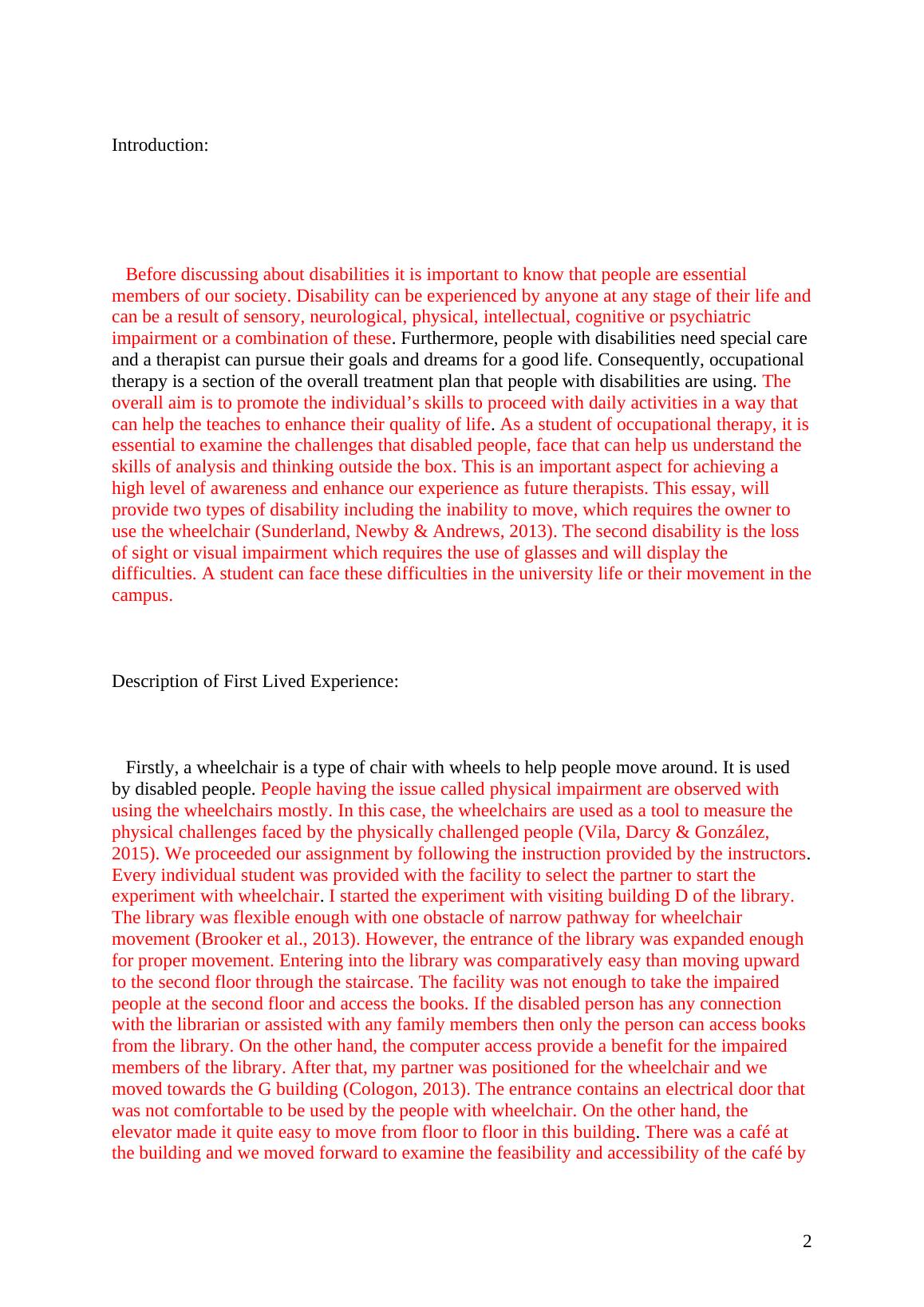OCC1011: Professional Issues Assessment Task 2022
The assignment requires students to record activities and barriers encountered during a hands-on practical exercise related to individuals living with impairments, and write a reflective essay about their feelings and new learning from the experience.
9 Pages3677 Words14 Views
Added on 2022-08-16
OCC1011: Professional Issues Assessment Task 2022
The assignment requires students to record activities and barriers encountered during a hands-on practical exercise related to individuals living with impairments, and write a reflective essay about their feelings and new learning from the experience.
Added on 2022-08-16
ShareRelated Documents
End of preview
Want to access all the pages? Upload your documents or become a member.
Occupational Therapy Home Safety Checklist
|9
|1745
|488
Challenges Faced by Different Groups: Old Age and Disabled People
|7
|1978
|389
Opinion Editorial - Exclusion of Disabled People: Part of Our Ugly History
|6
|1085
|94
Occupational Therapy: Interview with Physical Therapist and Registered Nurse
|5
|1077
|232
Efficacy of Occupational Therapy for Dementia in Older Adults
|20
|5817
|52
Occupational Therapy - PDF
|9
|2708
|75



